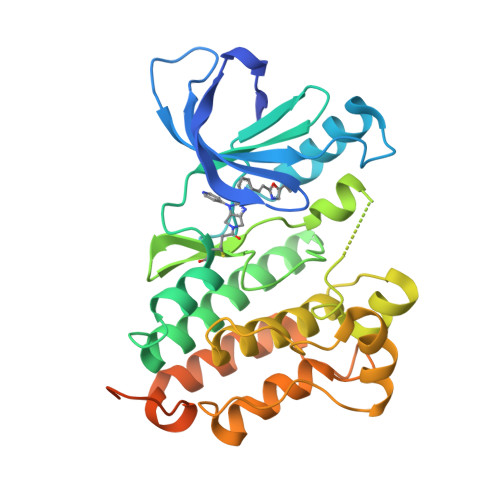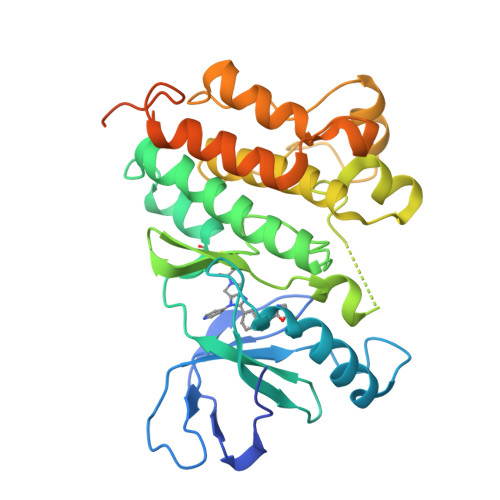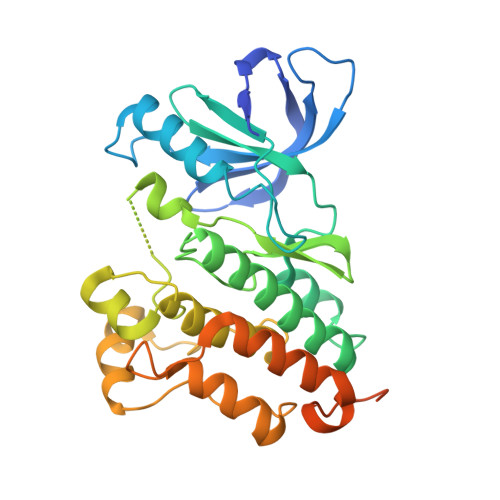Optimization of Potent, Efficacious, Selective and Blood-Brain Barrier Penetrating Inhibitors Targeting EGFR Exon20 Insertion Mutations.
Thomson, C., Braybrooke, E., Colclough, N., Davies, N.L., Floc'h, N., Greenwood, R., Guerot, C., Hargreaves, D., Johnstrom, P., Khurana, P., Kostomiris, D.H., Li, S., Lister, A., Lorthioir, O., Martin, S., McCoull, W., McLean, N.J., McWilliams, L., Orme, J.P., Packer, M.J., Pearson, S., Swaih, A.M., Tentarelli, S., Tucker, M.J., Ward, R.A., Wilkinson, S., Winlow, P., Wood, I.L.(2024) J Med Chem
- PubMed: 39340451
- DOI: https://doi.org/10.1021/acs.jmedchem.4c01792
- Primary Citation of Related Structures:
9EWS, 9EWT - PubMed Abstract:
Herein, we report the optimization of a series of epidermal growth factor receptor (EGFR) Exon20 insertion (Ex20Ins) inhibitors using structure-based drug design (SBDD), leading to the discovery of compound 28 , a potent and wild type selective molecule, which demonstrates efficacy in multiple EGFR Ex20Ins xenograft models and blood-brain barrier penetration in preclinical species. Building on our earlier discovery of an in vivo probe, SBDD was used to design a novel bicyclic core with a lower molecular weight to facilitate blood-brain barrier penetration. Further optimization including strategic linker replacement and diversification of the ring system interacting with the c-helix enabled photolytic and metabolic stability improvements. Together with refinement of molecular properties important for achieving high brain exposure, including molecular weight, H-bonding, and polarity, 28 was identified.
Organizational Affiliation:
Oncology R&D, AstraZeneca, 1 Francis Crick Avenue, Cambridge Biomedical Campus, Cambridge CB2 0AA, United Kingdom.




















